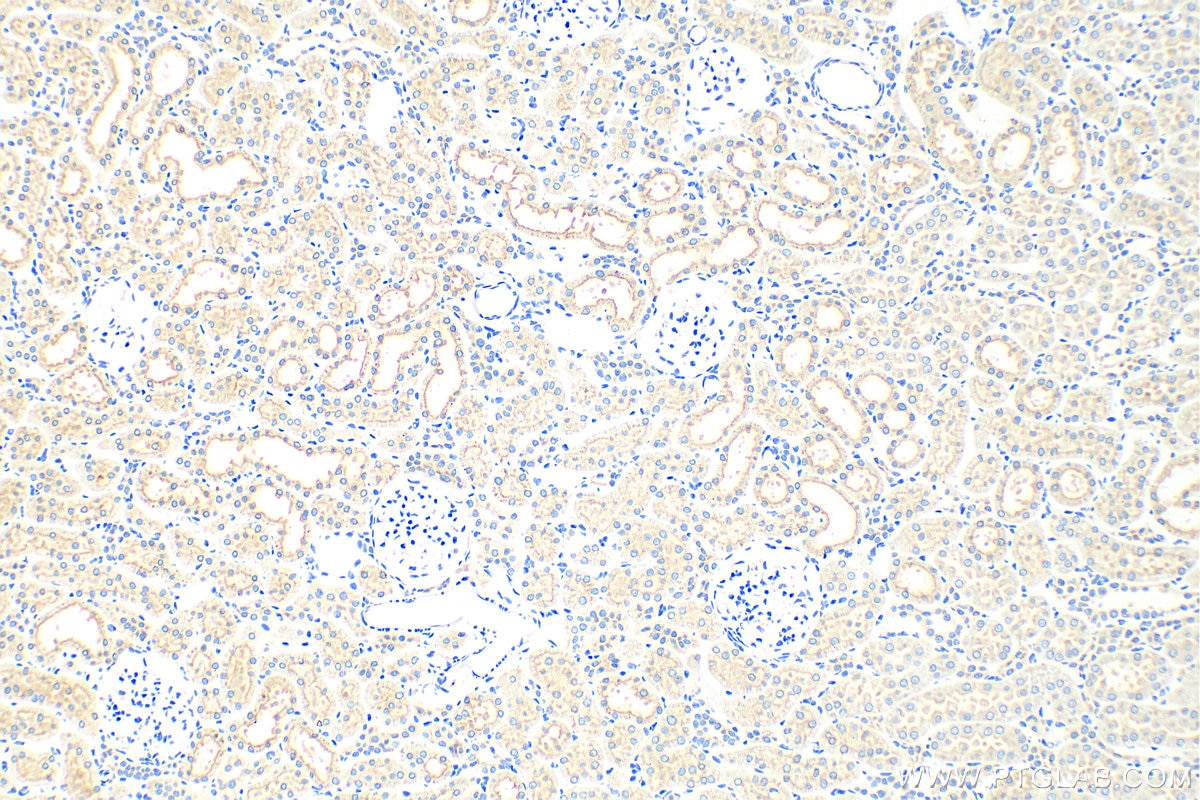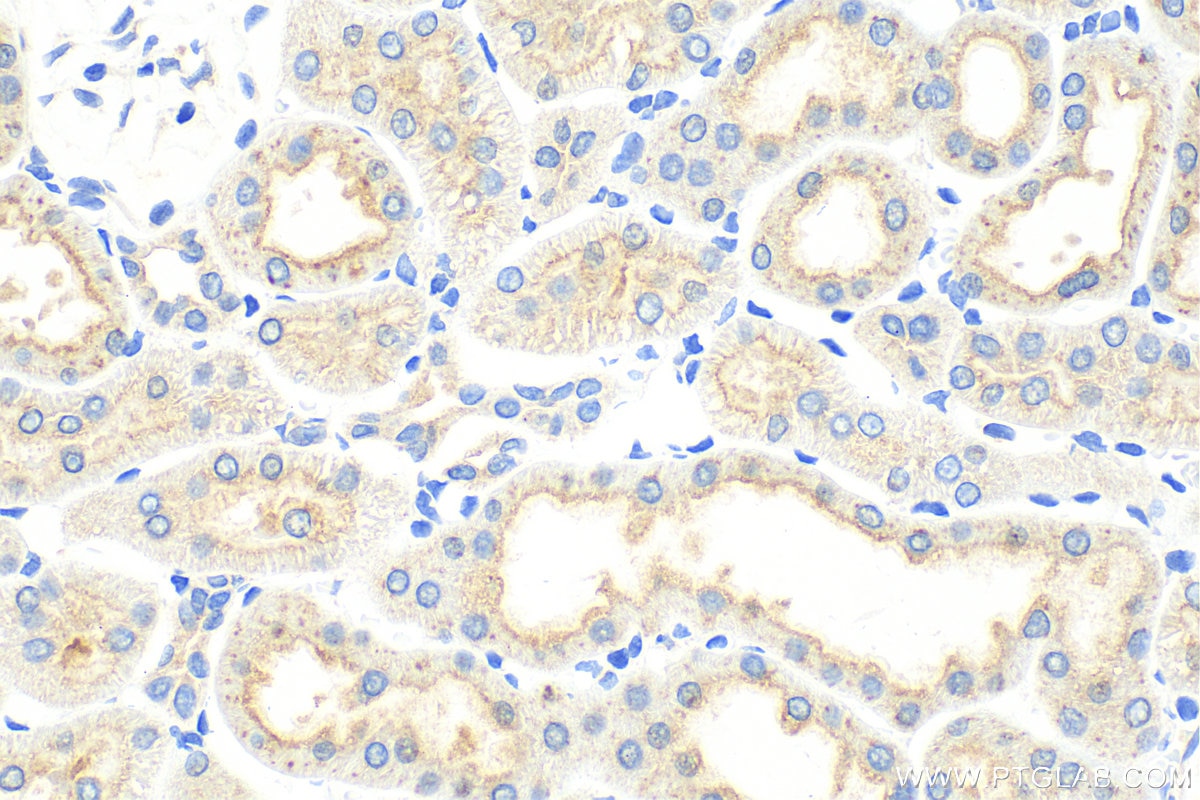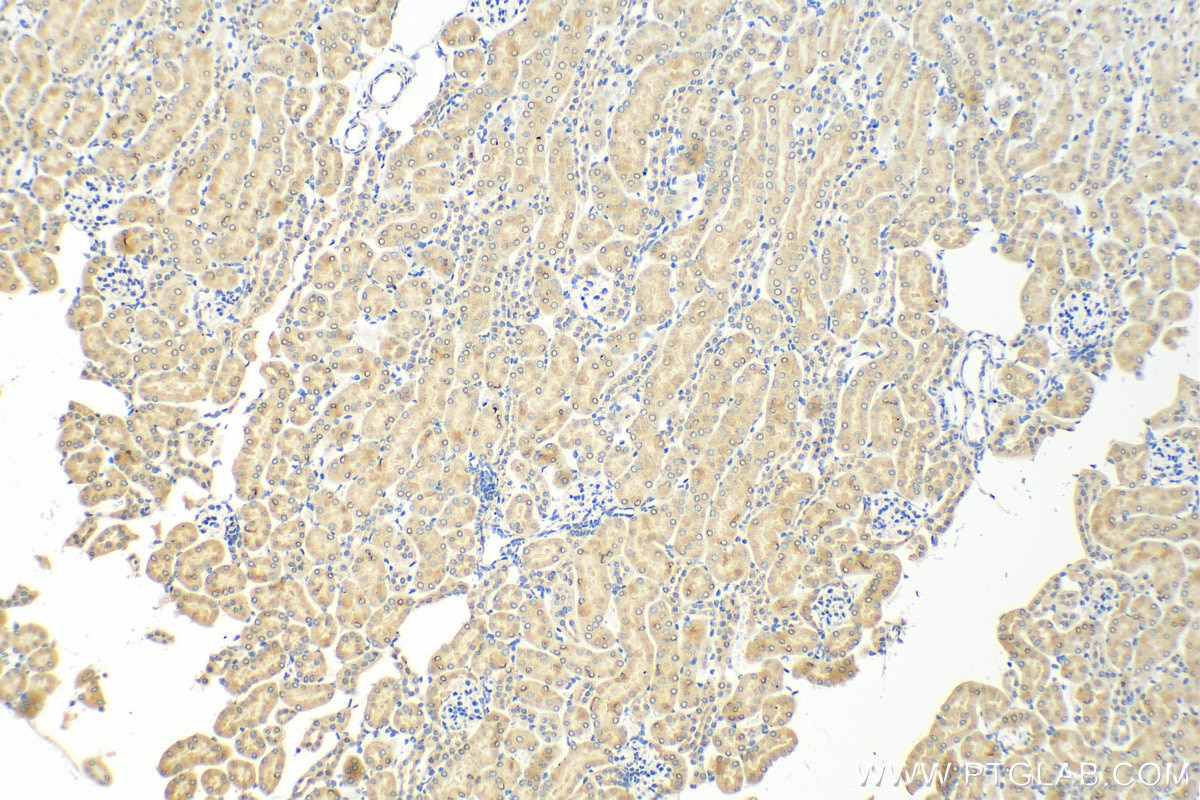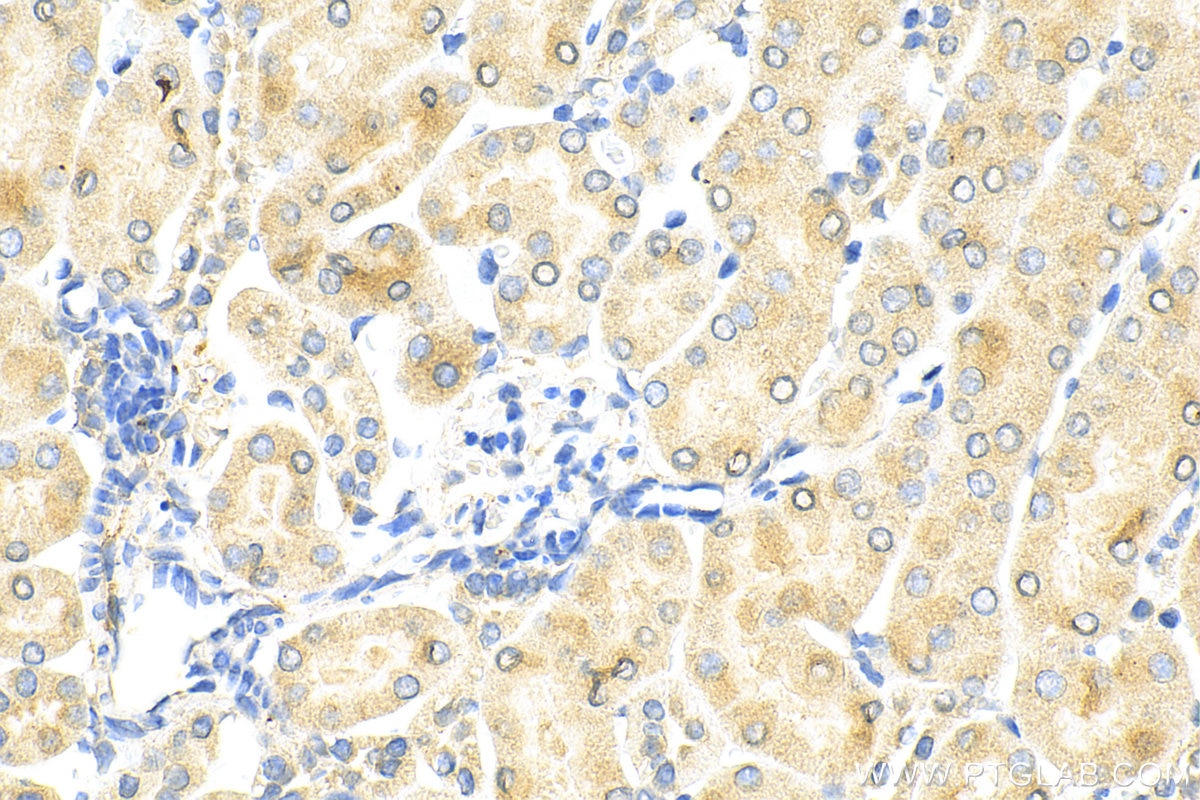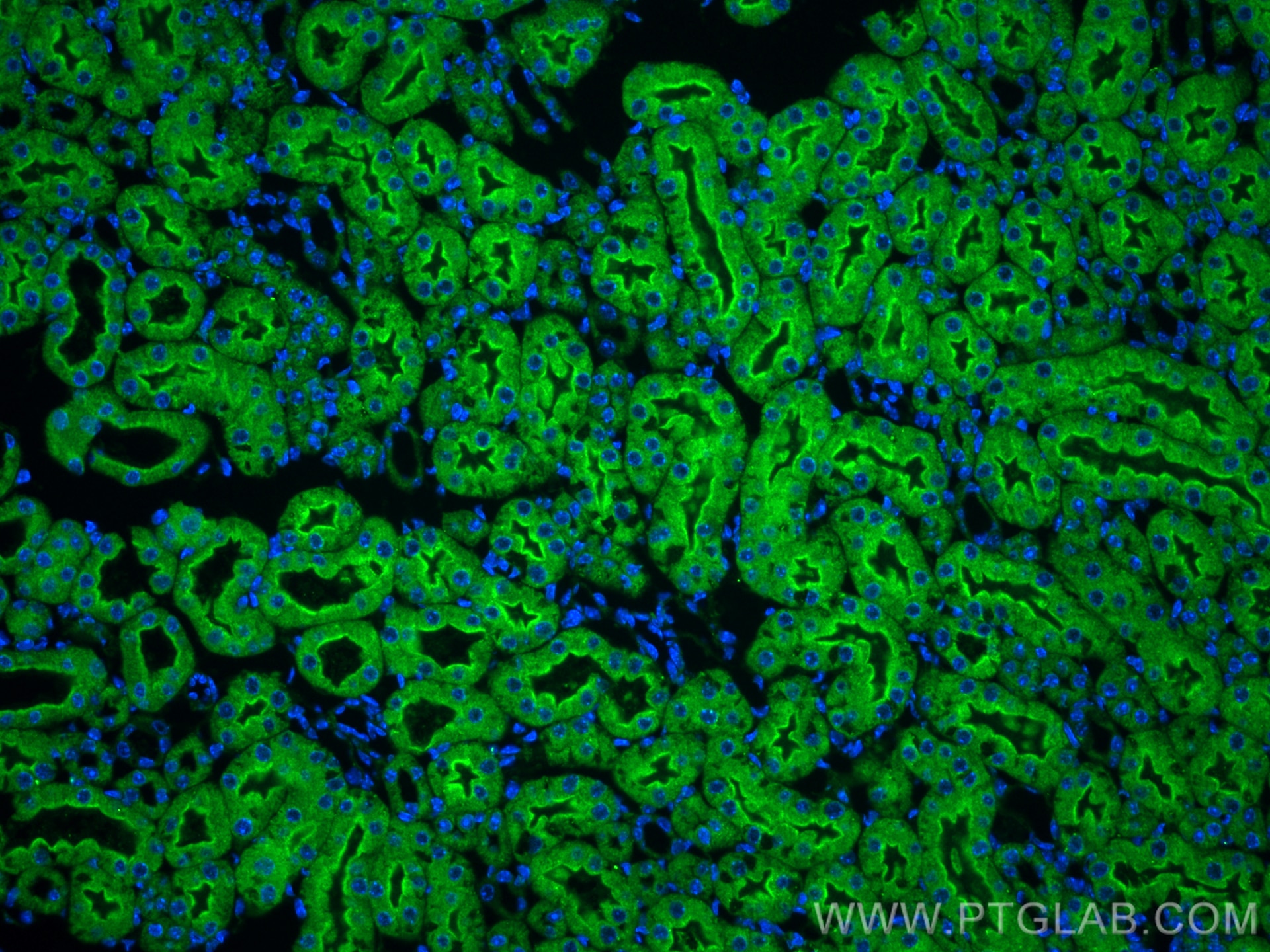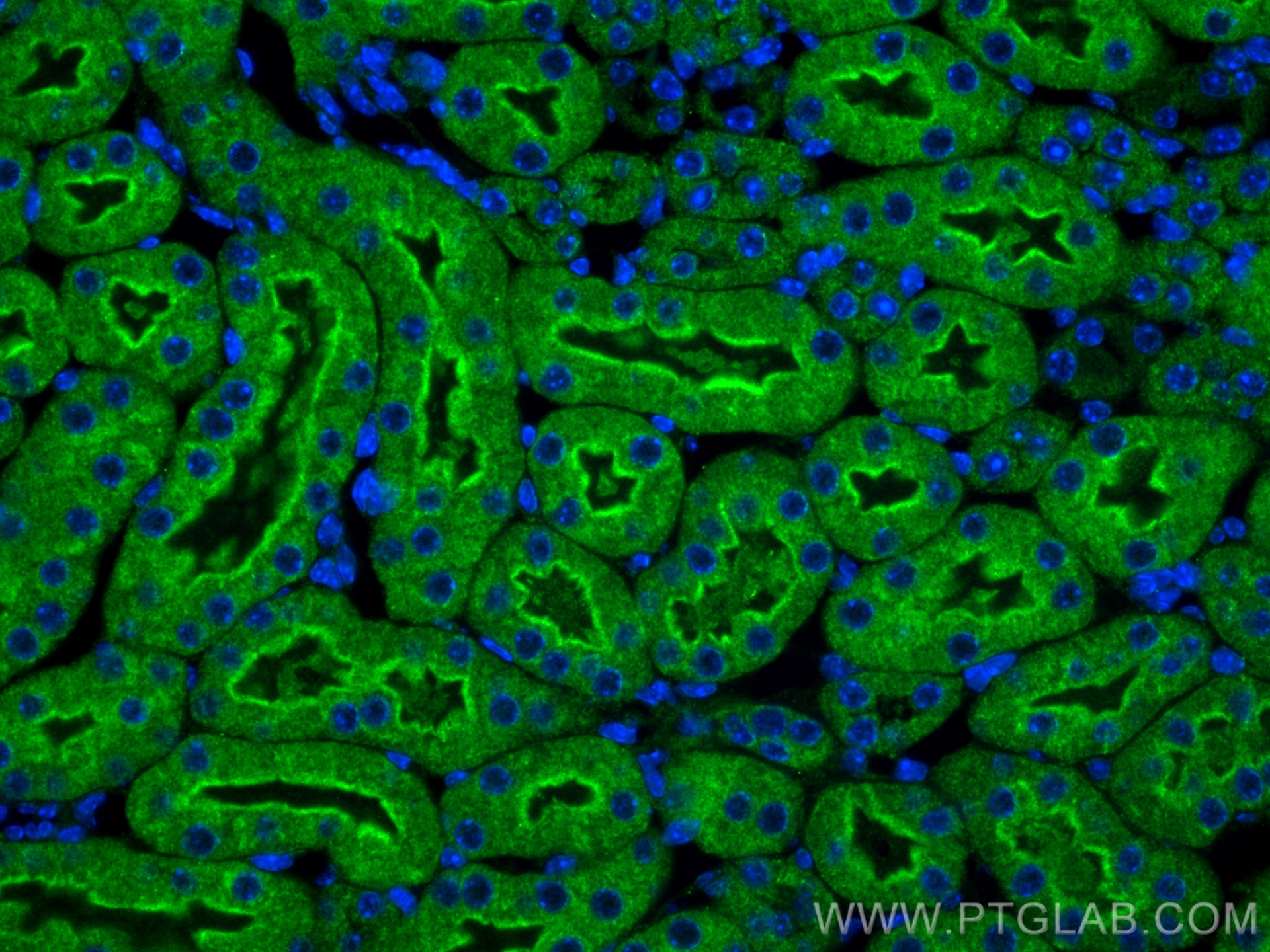KIM-1/HAVCR1 Polyklonaler Antikörper
KIM-1/HAVCR1 Polyklonal Antikörper für WB, IHC, IF-P, ELISA
Wirt / Isotyp
Kaninchen / IgG
Getestete Reaktivität
Maus, Ratte
Anwendung
WB, IHC, IF-P, ELISA
Konjugation
Unkonjugiert
Kat-Nr. : 30948-1-AP
Synonyme
Geprüfte Anwendungen
| Erfolgreiche Detektion in WB | Mausnierengewebe |
| Erfolgreiche Detektion in IHC | Rattennierengewebe, Mausnierengewebe Hinweis: Antigendemaskierung mit TE-Puffer pH 9,0 empfohlen. (*) Wahlweise kann die Antigendemaskierung auch mit Citratpuffer pH 6,0 erfolgen. |
| Erfolgreiche Detektion in IF-P | Mausnierengewebe |
Empfohlene Verdünnung
| Anwendung | Verdünnung |
|---|---|
| Western Blot (WB) | WB : 1:500-1:2000 |
| Immunhistochemie (IHC) | IHC : 1:200-1:800 |
| Immunfluoreszenz (IF)-P | IF-P : 1:50-1:500 |
| It is recommended that this reagent should be titrated in each testing system to obtain optimal results. | |
| Sample-dependent, check data in validation data gallery | |
Veröffentlichte Anwendungen
| WB | See 7 publications below |
| IHC | See 6 publications below |
| IF | See 3 publications below |
Produktinformation
30948-1-AP bindet in WB, IHC, IF-P, ELISA KIM-1/HAVCR1 und zeigt Reaktivität mit Maus, Ratten
| Getestete Reaktivität | Maus, Ratte |
| In Publikationen genannte Reaktivität | Maus, Ratte |
| Wirt / Isotyp | Kaninchen / IgG |
| Klonalität | Polyklonal |
| Typ | Antikörper |
| Immunogen | Rekombinantes Protein |
| Vollständiger Name | hepatitis A virus cellular receptor 1 |
| Berechnetes Molekulargewicht | 34 kDa |
| Beobachtetes Molekulargewicht | 72 kDa |
| GenBank-Zugangsnummer | NM_173149.2 |
| Gene symbol | Havcr1 |
| Gene ID (NCBI) | 286934 |
| Konjugation | Unkonjugiert |
| Form | Liquid |
| Reinigungsmethode | Antigen-Affinitätsreinigung |
| Lagerungspuffer | PBS with 0.02% sodium azide and 50% glycerol |
| Lagerungsbedingungen | Bei -20°C lagern. Nach dem Versand ein Jahr lang stabil Aliquotieren ist bei -20oC Lagerung nicht notwendig. 20ul Größen enthalten 0,1% BSA. |
Hintergrundinformationen
Kidney injury molecule 1 (KIM-1), also known as Hepatitis A virus cellular receptor 1 (HAVCR1), CD365, or T-cell immunoglobulin and mucin domain 1 (TIM-1), is a class I integral membrane glycoprotein, with an ectodomain containing Ig-like domain and a mucin domain. KIM-1 acts as a membrane receptor for hepatitis A virus (HAV) (PMID: 9658108; 8861957). KIM-1 provides a costimulatory signal for T cell activation and inhibits the development of peripheral tolerance (PMID: 16284246; 15793575). KIM-1 may be involved in the regulation of asthma and allergic diseases (PMID: 14534576). It has been reported that KIM-1 is shed into urine after acute kidney damage and is a marker of renal tubular injury (PMID: 14600030).
Protokolle
| PRODUKTSPEZIFISCHE PROTOKOLLE | |
|---|---|
| WB protocol for KIM-1/HAVCR1 antibody 30948-1-AP | Protokoll herunterladen |
| IHC protocol for KIM-1/HAVCR1 antibody 30948-1-AP | Protokoll herunterladenl |
| IF protocol for KIM-1/HAVCR1 antibody 30948-1-AP | Protokoll herunterladen |
| STANDARD-PROTOKOLLE | |
|---|---|
| Klicken Sie hier, um unsere Standardprotokolle anzuzeigen |
Publikationen
| Species | Application | Title |
|---|---|---|
Redox Biol Protective role of vitamin D receptor against mitochondrial calcium overload from PM2.5-Induced injury in renal tubular cells | ||
Sci Total Environ Exploring potential targets and mechanisms of renal tissue damage caused by N-(1,3-dimethylbutyl)-N'-phenyl-p-phenylenediamine quinone (6-PPDQ) through network toxicology and animal experiments: A case of chronic kidney disease | ||
Int Immunopharmacol Identification of potential targets regulating neutrophil extracellular traps in acute rejection of kidney transplantation based on transcriptomics and animal experiments | ||
Int Immunopharmacol Wogonoside ameliorates oxidative damage in tubular epithelial cells of diabetic nephropathy by modulating the HNF4A-NRF2 axis | ||
Ecotoxicol Environ Saf A network toxicology and machine learning approach to investigate the mechanism of kidney injury from melamine and cyanuric acid co-exposure | ||
Sci Rep Identifying novel aging-related diagnostic and prognostic models and aging-targeted drugs for sepsis patients |

